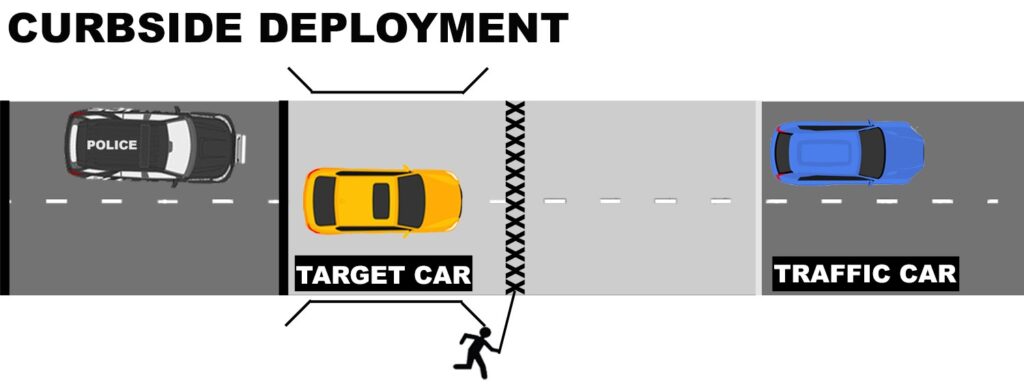In 1980, a Canadian system (Hovey) was introduced which allowed deployment from the curb. In 1990, a Utah State Trooper, Don Kilgrow, invented a modern design, and gave rise to the popularity of tire deflater.
Curbside deployment was developed out of necessity. In a pursuit, Officers lack time in setting up spikes. They found they could not pre-deploy and wanted another option. Officers wanted a special deployment method with the ability to quickly deploy.

 The practice evolved. Officers began deploying from the curb, because it was effective and allowed more locations to deploy from. The practice of spike deployment, had an element of risk.
The practice evolved. Officers began deploying from the curb, because it was effective and allowed more locations to deploy from. The practice of spike deployment, had an element of risk.
The practice was safely accomplished with a strategy and special spike system features.
- Safety: deploy early and seek cover,
- Effectiveness: Officers are taught a method to adjust the spike system from cover not from the side of the road.
- Safety: system positioned in the center lanes, so that no additional adjustments are required. officers exposure.
- Public Safety, and Personal Safety: covert deployment as to not provoke an adverse reaction by the driver.
Minimum specifications were developed and they called for a wider system and a system that deployed along the surface of the roadway. The practice was to deploy into the center lanes and for the officer to make any lane adjustments from cover not the edge of the road.
Follow along:
Spike Devil Operation manual
